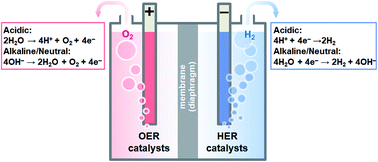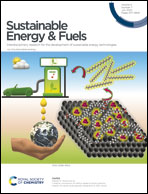Recent advances of nonprecious and bifunctional electrocatalysts for overall water splitting
Abstract
Electrocatalytic water splitting to produce clean hydrogen is a promising technique for renewable energy conversion and storage in the future energy portfolio. Aiming at industrial hydrogen production, cost-effective electrocatalysts are expected to be competent in both hydrogen evolution reactions (HERs) and oxygen evolution reactions (OERs) to accomplish the overall water splitting. Limited by the low tolerance and/or poor activity of most 1st-row transition metal-based electrocatalysts in strongly acidic media, bifunctional electrocatalysts are currently advocated to work at high pH values. Herein, this review summarizes the recent progress of nonprecious bifunctional electrocatalysts for overall water splitting in alkaline media, including transition metal-based phosphides, chalcogenides, oxides, nitrides, carbides, borides, alloys, and metal-free materials. Besides, some prevalent modification strategies to optimize the activities of catalysts are briefly listed. Finally, the perspective on current challenges and future prospects for overall water splitting driven by advanced nonprecious electrocatalysts are briefly discussed.

- This article is part of the themed collection: Sustainable Energy and Fuels Recent Review Articles


 Please wait while we load your content...
Please wait while we load your content...
